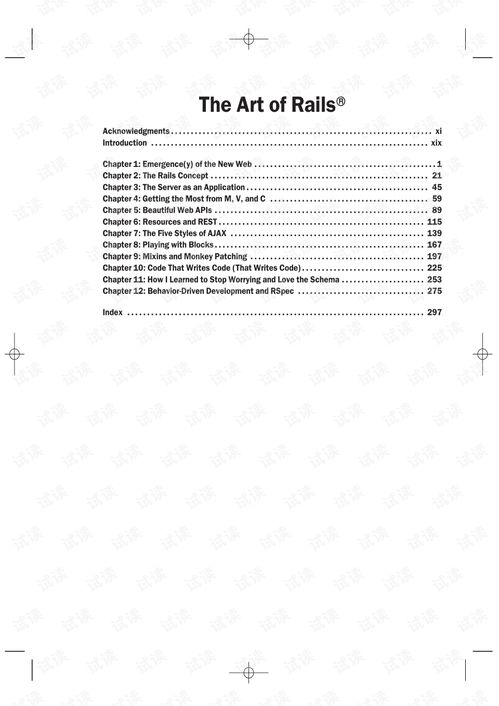As a dedicated angler who spends countless hours on the water, you've likely honed your fishing skills to perfection. However, one aspect that often goes overlooked is the art of changing your bait. Whether you're a seasoned pro or a beginner, mastering the technique of changing your fish饵 can significantly enhance your fishing experience. In this article, we'll delve into the world of tackle change, offering you essential tips and tricks to ensure you're always ready to catch the big one.
Understanding the Importance of Tackle Change
Before we dive into the nitty-gritty of how to change your fish饵, it's crucial to understand why this skill is so important. The fish you're targeting can be highly selective, and what works one day may not work the next. By changing your bait, you can adapt to the changing conditions and increase your chances of a successful catch. Here are a few reasons why tackle change is vital:
- Adapting to Fish Preferences: Different species of fish have varying preferences when it comes to food. By changing your bait, you can cater to the specific tastes of the fish you're targeting.
- Changing Water Conditions: Water temperature, clarity, and flow can all affect fish behavior. Adjusting your bait can help you stay one step ahead of the fish.
- Evaluating Your Tackle: Changing your bait is also an opportunity to inspect your tackle for any signs of wear and tear, ensuring it's in optimal condition for your next fishing trip.
Essential Tips for Changing Your Fish饵
Now that we've established the importance of tackle change, let's explore some essential tips to help you master this skill:
Have the Right Tools on Hand
Before you even start fishing, ensure you have all the necessary tools for changing your bait. This includes a sharp bait knife, bait holder, and a clean surface to work on. Having these tools readily available will make the process much smoother.
Keep Your Tackle Organized
Maintain a well-organized tackle box or bag. This will help you quickly locate the bait you need without wasting time. Group your baits by type and keep them in separate compartments to avoid any mix-ups.
Clean Your Hands and Surface
Always clean your hands before handling your bait. This will prevent any dirt or oils from transferring to your bait, which can deter fish. Similarly, keep your working surface clean to avoid contamination.

Use a Sharp Bait Knife
A sharp bait knife is essential for cutting bait effectively. A dull knife can cause unnecessary damage to your bait, making it less appealing to fish. Regularly sharpen your knife to ensure it remains in top condition.
Cut the Bait Properly
When cutting your bait, make sure to remove any bones or tough parts that might make it unappealing to fish. The goal is to create a natural-looking piece of bait that mimics the real thing.
Keep the Bait Alive
For live bait, such as worms or minnows, it's crucial to keep them alive and well. Store them in a bait bucket with aeration and water, and change the water regularly to maintain their vitality.
Adjust Your Technique
Different baits require different techniques for presentation. For example, a plastic worm might be best fished on a slow retrieve, while a live minnow might require a more aggressive approach. Experiment with various techniques to see what works best for the fish you're targeting.
Practice Makes Perfect
Like any skill, changing your fish饵 becomes second nature with practice. Spend time working on your technique, and don't be afraid to experiment with different baits and methods.
Advanced Tackle Change Techniques
Once you've mastered the basics, you can explore some advanced tackle change techniques to further enhance your fishing experience:
Customizing Your Bait
Feel free to customize your bait to suit the conditions and the fish you're targeting. This could involve adding scent, paint, or even creating your own unique lure designs.
Using Artificial Baits
Artificial baits, such as lures and flies, offer a wide range of options for changing your presentation. Experiment with different colors, sizes, and shapes to find what works best in your fishing environment.
Mastering the Art of Rigging
The way you rig your bait can greatly impact its effectiveness. Learn about different rigging techniques, such as the Carolina rig, Texas rig, or drop shot, to find the best method for your fishing situation.
Keeping Your Tackle Box Stocked
Ensure your tackle box is always well-stocked with a variety of baits, lures, and rigging materials. This will allow you to quickly adapt to changing conditions and fish preferences.
Conclusion
Changing your fish饵 is a fundamental skill that every angler should master. By following these essential tips and tricks, you'll be well on your way to becoming a more versatile and successful angler. Remember, the key to success lies in adapting to the conditions and constantly refining your technique. Happy fishing!












